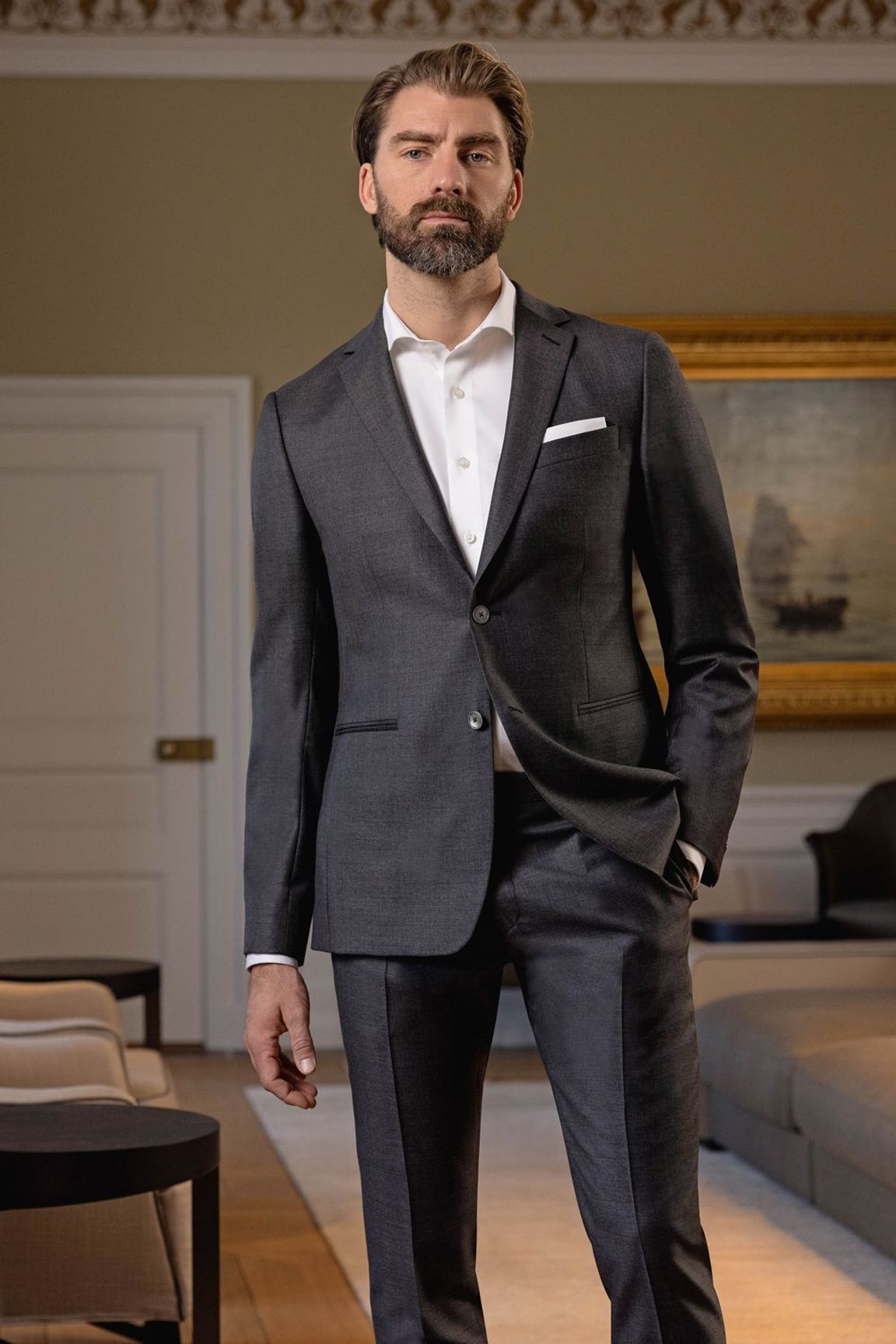Understanding the Tailoring Refine: From Textile Selection to Final Fitting for the Ideal Wardrobe
The customizing procedure is a complicated interaction of art and science, starting with the essential choice of textile choice and finishing in the exact modifications of final installations. Each fabric type brings unique top qualities that affect not only the aesthetic allure but likewise the garment's durability and viability for various occasions.
Importance of Material Option
Selecting the ideal material is crucial in the customizing process, as it straight influences the convenience, sturdiness, and overall aesthetic of the last garment. The choice of material establishes the structure for the garment's performance, functionality, and style. Various textiles have one-of-a-kind homes, such as breathability, stretch, and weight, which can significantly influence exactly how the garment drapes and fits the body.

A tailored piece made from an appropriate textile not just showcases craftsmanship however likewise raises the wearer's self-confidence. Subsequently, recognizing the subtleties of fabric option is critical for any type of customizing endeavor. It makes sure that the end product not only meets the visual wishes of the client but additionally aligns with useful demands, thus attaining an unified balance in between form and function in the tailored wardrobe.
Types of Fabrics and Their Uses
Comprehending the numerous types of materials offered is essential for making informed choices throughout the customizing process. Each textile has unique features that dictate its viability for specific garments and events.
Cotton, known for its breathability and gentleness, is perfect for sportswear and summer season clothes. Its flexibility allows it to be tailored into whatever from shirts to gowns. Wool, on the other hand, is favored for its warmth and framework, making it an outstanding selection for formal fits and outerwear. Its all-natural elasticity assists garments preserve form gradually.
Silk exhibits luxury and is light-weight, making it ideal for eveningwear and fragile shirts; however, it calls for mindful handling due to its delicacy. Bed linen, with its textured surface, is a preferred option for cozy climates, offering a crisp and ventilated feeling, however it wrinkles conveniently, which may influence the garment's look.
Artificial fabrics, such as polyester and nylon, offer sturdiness and resistance to creases, making them ideal for day-to-day wear and energetic clothes. Recognizing these textile types and their properties permits much better decision-making, ensuring that each tailored item not just fits well however additionally straightens with the intended function and celebration.
The Tailoring Techniques Explained
The art of customizing counts on a selection of methods that change fabric into well-fitted garments. Central to this procedure is pattern drafting, where a tailor creates themes based upon the client's dimensions and preferred design. This preliminary action ensures that the garment will fit the user effectively before any kind of cutting takes place.
As soon as patterns are established, reducing techniques enter play. Accuracy is critical as mistakes can cause misfitting garments. Tailors often make use of numerous reducing methods, such as single-layer reducing for elaborate styles and multiple-layer reducing for performance on conventional patterns.
Basting is another important strategy, enabling dressmakers to temporarily sew fabric assemble for a preliminary fitting (wedding suits perth). This technique offers the possibility to analyze the drape and overall silhouette prior to last sewing
Seaming techniques, consisting of flat-felled seams and French joints, enhance the garment's longevity and visual charm. Tailors also employ techniques such as interfacing and padding to offer structure and form to certain locations, like collars and shoulders.
Lastly, finishing techniques, consisting of hemming and edge completing, make certain the garment's longevity while providing a polished appearance. With each other, these techniques develop the backbone of reliable tailoring, causing elegant, tailor-made garments.

Fitting Adjustments and Factors To Consider
After the first tailoring strategies have actually been used and the garment is constructed, suitable adjustments become paramount to attaining the ideal fit. These adjustments deal with various elements of the garment, ensuring it contours to the user's physique and enhances general appearance.

The increase of trousers is an additional critical element; it ought to rest pleasantly over the hips without causing discomfort, enabling ease of motion. Hemming sizes for both pants and skirts should mirror the wearer's recommended style while respecting proportions.
In addition, attention must be offered to the rear of the garment, guaranteeing that there are no unpleasant pulls or excess fabric - bespoke tailor perth. Each modification should be diligently considered, as also small alterations can significantly impact the total fit read the article and aesthetic of the tailored piece, inevitably bring about a wardrobe that shows self-confidence and sophistication
Keeping Your Tailored Apparel
Always follow the treatment label instructions, which might advise completely dry cleansing for delicate textiles or device cleaning for even more long lasting materials. Prevent constant laundering, as this can put on down the textile and alter the garment's shape.
Storage space is just as vital; use cushioned hangers for jackets and coats to keep shoulder framework, and store pants folded up neatly or hung to avoid creasing. Safeguard garments from direct sunshine, which can fade shades and damages fibers.
Additionally, regular assessments for minor fixings can prevent larger problems. Look for loose buttons, fraying joints, or indications of moth damages, more helpful hints attending to these issues immediately to maintain the garment's stability.
Last but not least, think about seasonal why not look here turning. Wearing customized pieces in moderation allows textiles to recoup, prolonging their life-span. By implementing these upkeep strategies, you can guarantee that your tailored garments remain as pristine as the day you initially wore them, enhancing your excellent wardrobe for many years ahead.
Verdict
The tailoring procedure, including fabric option, proficient strategies, and accurate fitting adjustments, plays an important function in developing garments that enhance both convenience and style. Recognizing the significance of maintenance expands the life of tailored garments, solidifying their value in a well-curated closet.